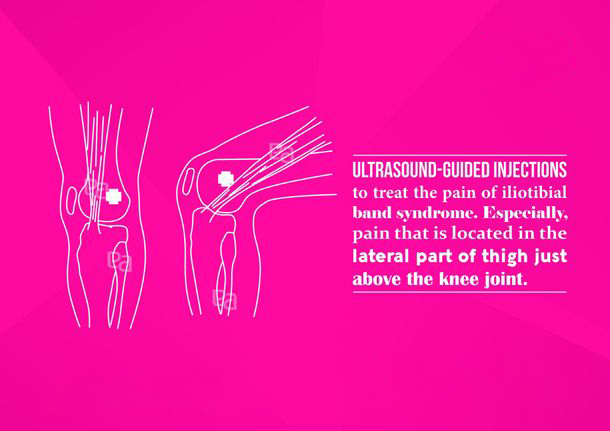

Treatments
HIP, KNEE & ANKLE PAIN

Iliotibial Band Injection
What is iliotibial band and why do I need this injection?
The iliotibial band is a thick band of fascia (tissue) that begins at the iliac crest in the pelvis (outer side of the top of the hip bone), runs down the outside of the thigh, and crosses the knee to attach to the top of the tibia or shinbone. The iliotibial (IT) band helps stabilise the outer part of the knee through its range of motion.
Iliotibial band injection is a procedure used to reduce pain in patients suffering with iliotibial band syndrome. Iliotibial band syndrome (ITBS or IT band syndrome) is an overuse injury of the connective tissues that are located on the lateral or outer part of thigh and knee. It causes pain and tenderness above the knee joint, and is the most common cause of pain on the outside of the knee in athletes.
How is an iliotibial injection done?
At Atlas Pain Care, Coimbatore, you will be asked to change into a hospital gown and taken to our procedure room. You will be positioned in a manner where you will lie on your back with a pillow positioned under the knee for comfort. Your knee and thigh will be cleaned with antiseptic solution and draped. The injection site is then identified using ultrasound guidance and a small amount of local anaesthetic is injected into the skin overlying the injection site to numb the skin. The medications are then given through a longer needle that has been positioned in the exact spot using ultrasound guidance. You may feel some discomfort during the injection, but this normally settles quickly. The whole procedure takes between 15 and 30 minutes. After the procedure, you will be placed on a trolley and taken to recovery, where you will remain for around an hour.
What happens after the injection?
Following the injection, our physiotherapist will teach you stretching exercises of the iliotibial band that needs to be done on a regular basis. In younger patients, our physiotherapists would teach how to use the foam roller for self-management of ITB syndrome.
What are the risks of the procedure?
As with most procedures, there is a remote risk of bleeding, infection, nerve injury or allergic reaction to the medications used. Injection site pain/soreness is the most common complication, which is temporary.
Please read our FAQ section to know more about the do's and don'ts prior to and after the procedure.

